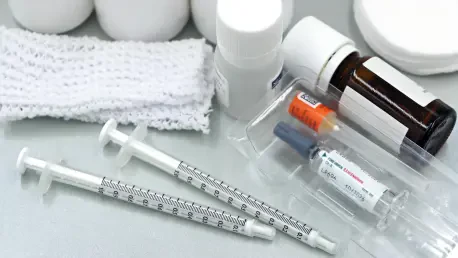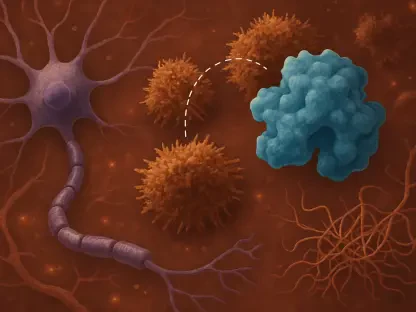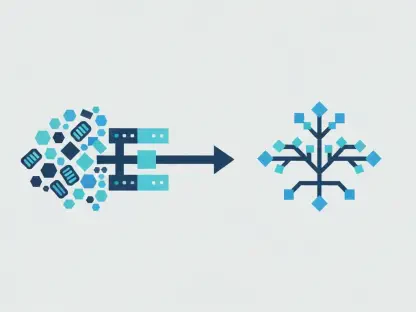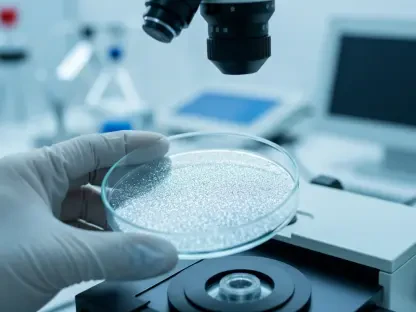In an era where medical advancements are constantly tested by evolving health challenges, drug resistance stands as a formidable barrier, impacting millions of patients worldwide with a staggering failure rate in treatments like chemotherapy, where up to 50% of cases show reduced efficacy due to resistance mechanisms. This pressing issue, often driven by efflux transporters such as Breast Cancer Resistance Protein (BCRP), compromises the effectiveness of critical drugs used in cancer and cardiovascular therapies, leaving clinicians searching for innovative solutions. Amid this crisis, a surprising ally has emerged from nature: flavonols, plant-derived compounds abundant in everyday foods like onions and tea, are showing remarkable potential to inhibit BCRP and enhance drug absorption. Research into these natural inhibitors is gaining momentum, offering a glimpse of hope in reversing resistance and improving patient outcomes. This analysis delves into the current landscape of flavonol research, explores real-world applications, incorporates expert perspectives, and evaluates future implications for tackling one of medicine’s toughest obstacles.
The Surge of Flavonols as BCRP Inhibitors
Mounting Research and Scientific Interest
Recent studies have illuminated the capacity of flavonols to counteract drug resistance by targeting BCRP, a key player in expelling drugs from cells. A pivotal investigation published in a prominent scientific journal revealed that 22 out of 77 tested flavonols inhibited BCRP activity by over 25% at low concentrations, with compounds like 3,4′-dimethoxyflavone standing out for their potency, achieving significant inhibition at minimal doses. These findings underscore a growing fascination within pharmacological circles, where funding and publications on natural inhibitors have surged notably from 2025 onward, reflecting a broader shift toward harnessing dietary compounds for therapeutic enhancement.
The convergence of diverse research methodologies further strengthens the case for flavonols. By integrating in vitro experiments with living cells, in vivo trials in animal models, and in silico computational simulations, scientists are building a robust understanding of how these compounds interact with BCRP at a molecular level. This multidisciplinary approach not only validates the inhibitory effects but also highlights a trend of increasing precision in identifying promising natural agents, setting a foundation for potential clinical breakthroughs in drug efficacy.
Practical Applications and Emerging Case Studies
Beyond laboratory settings, flavonols are demonstrating tangible benefits in enhancing drug bioavailability. In vivo experiments with rats have shown that co-administering specific flavonols, such as 3,4′-dimethoxyflavone, with drugs like sulfasalazine—a BCRP substrate—resulted in a 1.79-fold increase in the drug’s plasma concentration over time. Such results point to a direct impact on absorption, particularly in the intestinal tract, where BCRP often limits drug uptake, offering a practical pathway to improve treatment outcomes.
The implications extend to critical therapeutic areas like oncology and cardiovascular care. Experimental data suggest that flavonols can reverse resistance to chemotherapy agents like SN-38, an active metabolite used in cancer treatment, by blocking BCRP-mediated efflux in cell models. Similarly, in statin therapy, compounds like rosuvastatin could see improved absorption when paired with these natural inhibitors, potentially benefiting patients with high cholesterol. These applications hint at a transformative role for flavonols in clinical protocols.
Additionally, the pharmaceutical and academic sectors are taking note, with several institutions initiating pilot studies to explore flavonol-based adjuvants as part of drug formulations. While still in early phases, these efforts reflect a practical trend toward integrating natural compounds into mainstream medicine, bridging the gap between theoretical research and patient care. This movement underscores the real-world relevance of flavonols in addressing persistent therapeutic challenges.
Expert Perspectives on Flavonols and Drug Resistance
Renowned pharmacologists and oncologists are increasingly vocal about the potential of flavonols to reshape treatment landscapes through BCRP inhibition. Many experts emphasize that the ability of these compounds to enhance drug retention within cells could significantly improve success rates in therapies plagued by resistance, particularly in aggressive cancers where current options often fall short. This optimism is tempered, however, by a recognition of the complexities involved in translating such findings into viable treatments.
A critical concern among specialists is the issue of low oral bioavailability, which limits the systemic impact of flavonols, often confining their effects to the gut rather than target tissues. Studies have also noted species-specific differences in BCRP function between animal models and humans, raising questions about the direct applicability of preclinical results. These challenges highlight the need for cautious interpretation and further validation to ensure that the benefits observed in controlled settings hold true in diverse patient populations.
Experts also stress the urgency of advancing to human clinical trials to establish safety and efficacy profiles for flavonol-based interventions. There is a consensus on the importance of developing improved delivery mechanisms—such as novel formulations or encapsulation techniques—to overcome bioavailability barriers. These insights provide a balanced view of the trend, reinforcing both the transformative potential and the substantial hurdles that must be addressed for clinical success.
Future Horizons for Flavonols in Combating Drug Resistance
Looking ahead, the trajectory of flavonols in medical applications appears promising, with potential innovations poised to enhance their utility. Advances in drug delivery systems, such as nanoparticle encapsulation or targeted release formulations, could address current limitations by ensuring higher systemic concentrations, thus extending their effects beyond intestinal absorption to critical sites like tumors or the brain. Such developments could redefine how these compounds are integrated into therapeutic regimens.
The anticipated benefits are substantial, ranging from higher success rates in chemotherapy by overcoming resistance to better management of cardiovascular conditions through improved statin absorption. Yet, challenges loom, including the risk of unintended drug-diet interactions, where high flavonol intake from food might unpredictably alter drug metabolism. This necessitates careful monitoring and guidelines to prevent adverse effects, ensuring that benefits are not overshadowed by safety concerns.
Broader implications for healthcare could see flavonols playing a role in personalized medicine, where dietary interventions are tailored to individual treatment plans to maximize drug efficacy. However, regulatory hurdles and the need for extensive safety data pose significant barriers to widespread adoption. As research progresses, striking a balance between innovation and risk mitigation will be crucial, potentially reshaping therapeutic strategies while safeguarding patient well-being.
Reflecting on a Path Forward
Looking back, the exploration of flavonols as inhibitors of Breast Cancer Resistance Protein marked a significant chapter in the fight against drug resistance, showcasing their capacity to enhance drug bioavailability and reverse resistance in preclinical models. Expert endorsements lent credibility to this approach, while practical applications in animal studies provided concrete evidence of impact. The journey also revealed critical gaps, such as bioavailability challenges and the need for human validation, which framed the discourse around this emerging solution.
Moving forward, actionable steps emerged as essential to capitalize on this momentum. Prioritizing clinical trials to test flavonols in human subjects became a clear necessity, alongside innovations in delivery methods to ensure effective systemic reach. Collaboration between research institutions, pharmaceutical developers, and regulatory bodies stood out as a vital strategy to navigate safety and efficacy concerns, paving the way for integrating these natural compounds into mainstream medicine with confidence.









